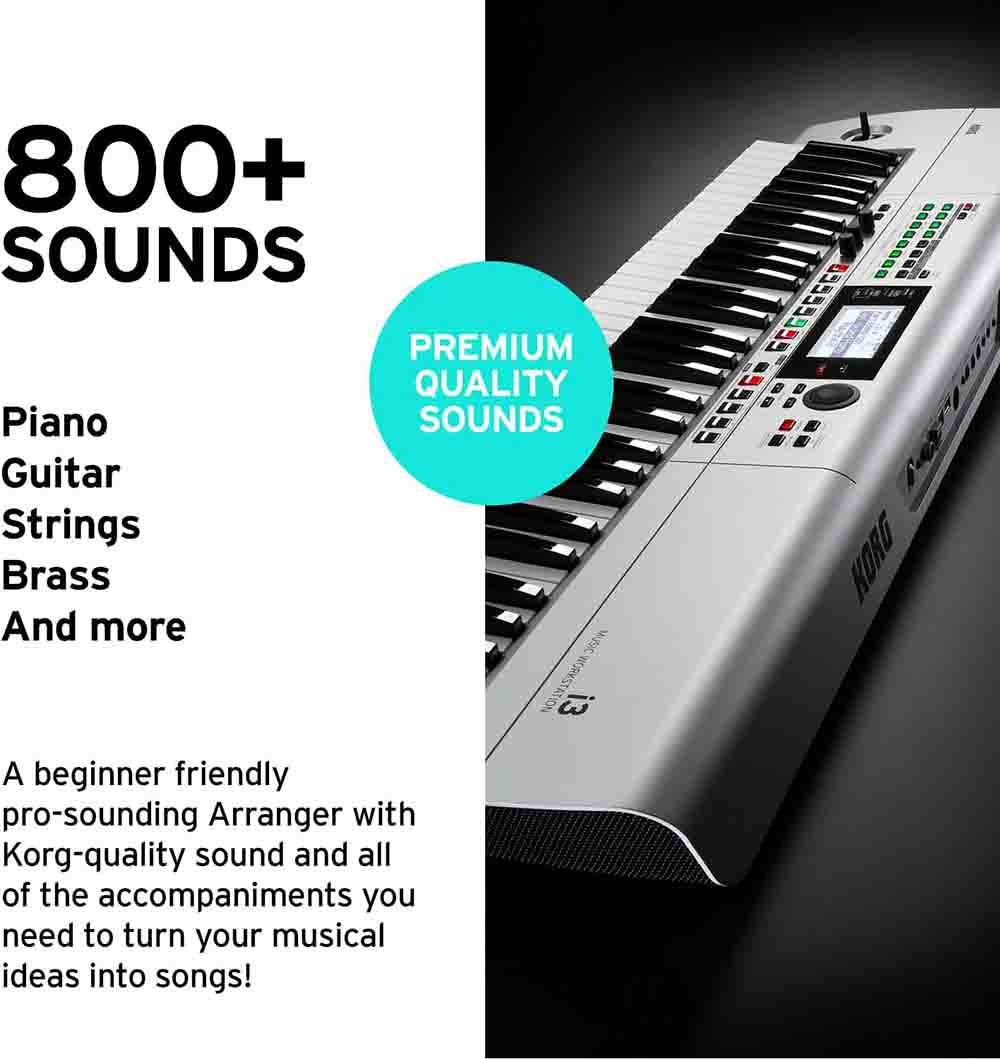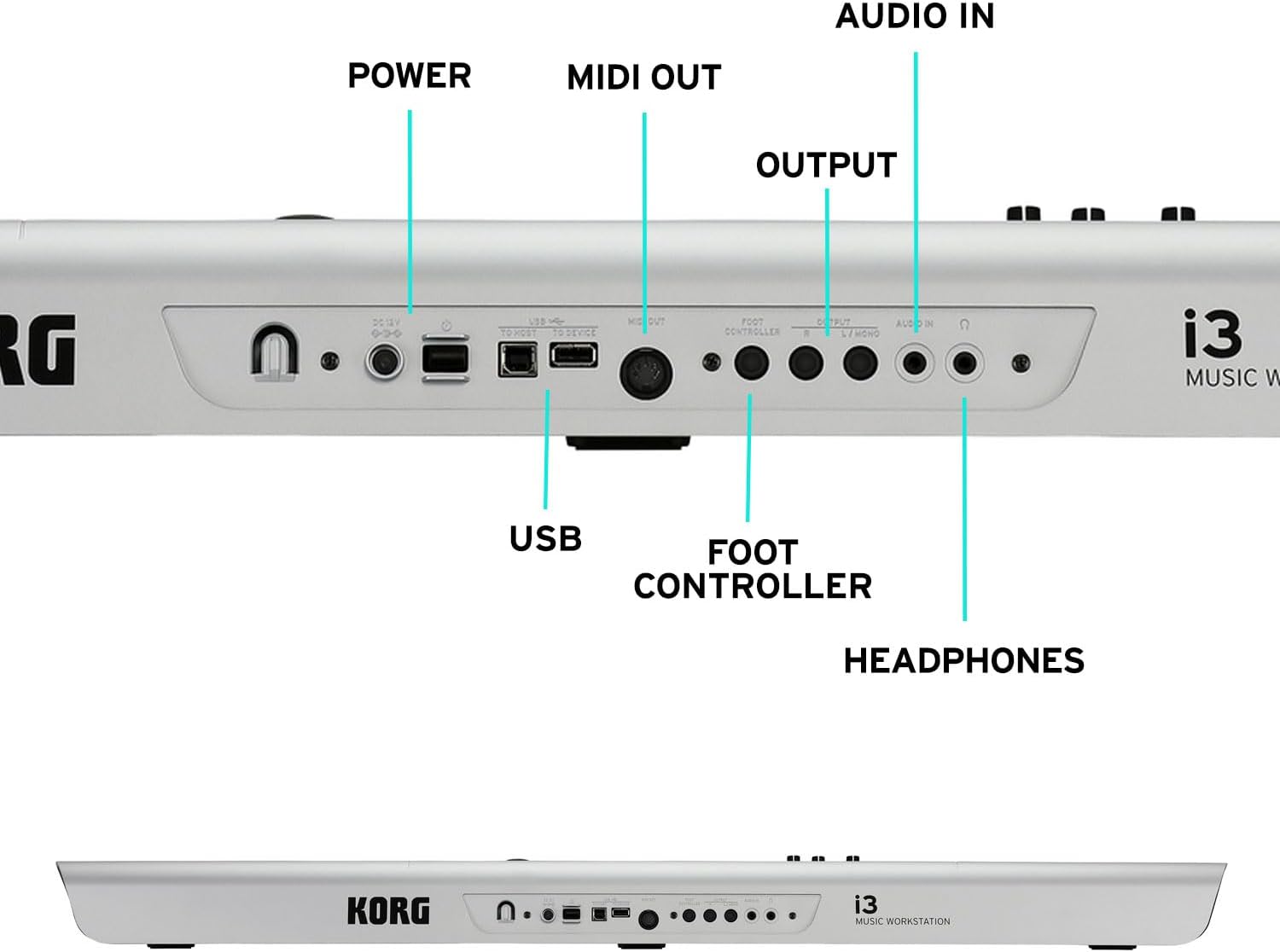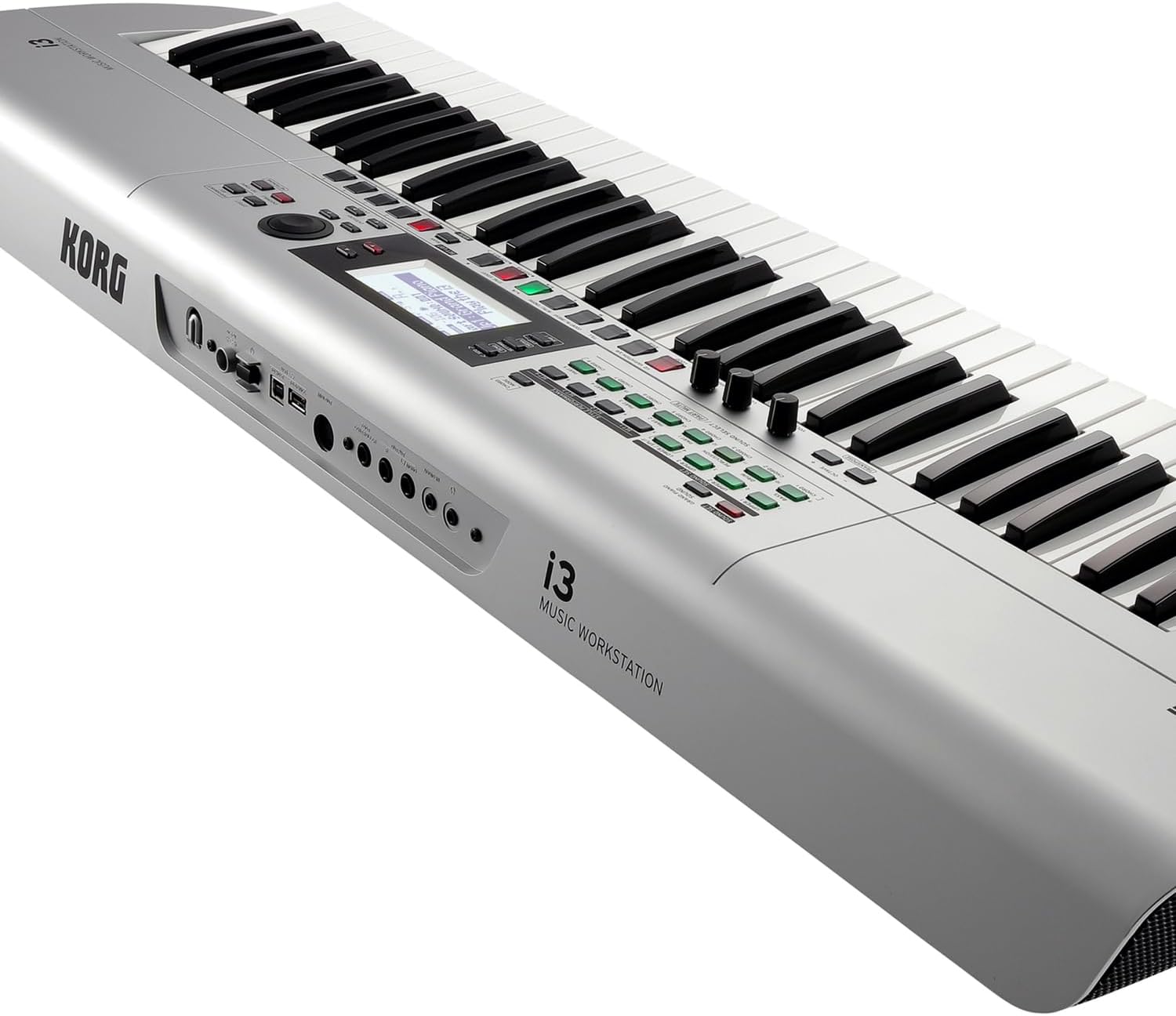INTRODUCTION TO THE KORG KRONOS
Upon its debut in 2011, the Korg Kronos Keyboard initiated a transformative shift in the realm of keyboard workstations. To be candid, no other instrument on the market can quite measure up to its prowess. What sets this remarkable console apart from its counterparts? Why is it an essential addition for any discerning musician? Allow us to unveil the answers to these questions.
The Korg Kronos Keyboard workstation stands as a pivotal keyboard for musicians, marking a significant paradigm shift in keyboard development. What sets the latest Korg Kronos Keyboard apart is its continuous evolution within Korg’s line of workstations. While it boasts several hardware enhancements that are undeniably valuable, the majority of its features are software-based and have been carried over to the two previous Kronos iterations, which is a welcome development.
In the past, the prospect of updates for your keyboard was somewhat uncertain, often limited to those who could afford expensive ROM boards or expanded sound libraries. Korg’s fresh approach to modern workstations is truly invigorating, ensuring that musicians can benefit from ongoing improvements without the burden of additional costs.


Functionality
The latest iteration of the Kronos’ operating system has introduced a slew of enhancements aimed at improving overall functionality and ease of use during studio sessions and live performances. Amid various bug fixes and updates, Korg has honed in on two pivotal components of the core operating system: the Search Engine and the Set List.
These improvements empower users to tailor their content for each set, select a color scheme for easy organization, and even determine the number of entries displayed on-screen simultaneously. This expanded visibility, significantly larger than before, aids in recalling valuable information such as patch changes, transpositions for specific songs, and even song lyrics.
For those with the skill and inclination, the Korg Kronos Keyboard is capable of delivering heavy rock and metal sounds, reminiscent of acclaimed artists like Jens Johanson, Tuomas Holopainen, Janne Wireman, Jordan Rudess, Derek Sherinian, and many others. However, if you’re not deeply into sound design, the Kronos Korg comes preloaded with patches that excel in nearly any musical context. The string section, in particular, stands out for its remarkable sound clarity.
In the Set List mode, you have the flexibility to assign any program, song, or combination to individual slots in any order, catering to your specific live performance needs. Additionally, the ability to assign a foot pedal for sound changes eliminates the need to switch hands, ensuring seamless transitions between combinations or programs without any interruptions. The new Find function facilitates rapid searches for specific patches you intend to use, streamlining your workflow.
FEATURES OF KORG KRONOS KEYBOARD
The Korg Kronos Keyboard stands as a comprehensive workstation, serving as a one-stop solution for all your keyboard and musical requirements. It boasts an extensive library of sounds and rhythms that can be expanded to suit your preferences. The onboard sequencer is a versatile tool capable of handling a wide range of tasks.
The all-new Korg Kronos Keyboard showcases a refined design, featuring original wooden side panels and enhanced silkscreened labeling for improved readability. The back panel has been upgraded, with gold-plated input and output jacks that elevate the overall sound quality. The front casing now boasts robust steel construction, with clearly marked handles, buttons, and I/O jacks for ease of use. Ventilation is aided by a steel mesh at the rear, contributing to the near-silent operation of the console—a significant improvement over the previous models, which were plagued by fan noise. The addition of wooden end caps also imparts a touch of vintage and retro charm to the Korg Kronos.
Display
The Korg Kronos has undergone some notable changes in its Touch View Color display, enabling players to swiftly adjust parameters on-screen using the latest system-wide Touch or Drag mode. This is particularly advantageous for musicians who require frequent sound modifications during live performances. However, the most remarkable innovation lies in the tSGX-2 piano engine, which incorporates the impressive 9 GB Berlin Grand model along with dedicated “una corda” presets.
Both the Kronos and the new Kronos X share the same esteemed architecture, featuring nine distinct engines, each dedicated to a specific synthesis type: SGX-2 for classic Acoustic Pianos; EP-1 for modern digital Pianos; HD 1 for PCM sounds; AL-1 for Analog keyboards; the CX-3 for Tonewheel organs; the STR-1 for Stringed instruments; the MOD 7 for Waveshaping VPM synthesizers; the MS-20EX for faithfully recreating sounds from the original Korg MS-20 analog synth; and the PolysixEX for capturing all the classic tonal nuances of the Polysix.
Touchscreen
While the OASYS had a larger touchscreen, the Kronos’ screen boasts a higher resolution at 800 x 600 compared to the previous 640 x 480. These additional pixels contribute to crisper and clearer text rendering. Despite its single-touch operation, which may seem somewhat dated in the age of modern smartphones, the Kronos offers the flexibility of navigation with either a stylus or a fingernail. This approach proves especially efficient when making selections from the feature-rich pop-out menus.
In the latest update, the addition of meters has proven to be a significant enhancement. These meters allow you to monitor audio levels in combinations, songs, main output, programs, and insert effects. This feature simplifies the identification of areas with high audio levels, providing greater control over your sound.
For added convenience, the Kronos supports the connection of a USB alphanumeric keyboard, enabling you to type text instead of relying solely on the touchscreen interface. Furthermore, this update allows you to load necessary samples seamlessly. This means that if you encounter the message “Samples not loaded,” you can swiftly address the issue by employing the “Load Required Samples” command, ensuring that all patches are loaded with just a simple button press.
Synth Engines
The Korg Kronos Keyboard delivers the experience of using a music workstation with an impressive array of virtual instruments, all without the typical hassles associated with a computer-based setup. Notably, the EP-1 pianos and SGX-1 pianos are exclusive to the Kronos.
SGX-1 Pianos: The acoustic piano sound may not be world-class, but it certainly holds its own for live gigs. The Korg Kronos Keyboard takes a remarkable leap forward in delivering the best-sounding pianos ever featured in a workstation. It offers two primary piano flavors: a brighter “Japanese” tone and a full-bodied “German” grand sound. Both excel in recordings, and their sharper variations cut through live rock tracks without losing their strength.
Each piano streamlines 4.7GB of full-length samples from the internal solid-state drive, resulting in no phase issues, loops, glitches, or unnatural decay. You have control over sustain pedal resonance, lid position, release sample volume, and mechanical noise, allowing for fine-tuned customization. Top-tier piano plugins like Synthogy Ivory require significantly more memory, with discernible differences mainly noticed in solo performances.
P-1 Electric Pianos: In contrast to the OASYS, which relied on standard multisamples for its vintage electric pianos, this plugin takes electric piano sounds to a new level. It comes pre-loaded with 4 tine (Rhodes) and 2 reed (Wurlitzer) presets. You can tweak parameters like attack brightness, hammer width, and release noise. Additionally, you have the option to integrate one of the 9 virtual stompboxes, including the essential Mxr Phase 90. Cabinet modeling emulates either the internal speakers of a Wurlitzer or the Fender Suitcase amp. Playing softly yields beautiful ballad tones, showcasing an impressive dynamic range.
CX-3 Organ: Korg has included the discontinued CX-3, which emulates the B-3 organ, as a part of the Kronos. It provides separate lower and upper drawbar sections but lacks a bass pedal. You can fully customize sonic details such as percussion, vibrato, chorus, and leakage. The rotary simulation offers control over slowdown and speed-up times, distinct speeds, and microphone positions for the bass and treble rotors. The rotary effect garners a solid B+ rating, while the organ model receives an A. However, other clones like the Nord C2 and Numa Organs may handle high-pitched sounds more realistically at high rotary speeds.
AL-1 Synth: Describing this analog modeling powerhouse would be an understatement. It features 2 oscillators with continuously evolving waveforms, dual multimode filters with parallel or serial routing, and a multi-filter that seamlessly shifts between 2 types in real-time. Additionally, it includes a sub-oscillator for external output, 5-segment envelopes, hard synchronization, and an array of modulation options, including a step sequencer that can “play” at any eligible point. Notably, its sound quality, modeled filters, and waveforms are outstanding, with no zipper or stepping noise when tweaking parameters. The only thing more analog than this is a genuine analog synthesizer.
PolysixEX and MS-20EX Synths: These are faithful replicas of Korg’s classic MS-20 and Polysix analog synthesizers. Everything about these plugins is stellar, with Korg simplifying the MS-20’s patch panel connections elegantly. To establish connections, you merely tap a jack twice, and a yellow square surrounds it, then tap on the second jack to complete the connection. The Korg Kronos Keyboard prevents illogical connections, making it particularly useful for novice programmers.
Mod-7 VPM Synth: Imagine the Yamaha DX7 with a modular patch panel that lets you manipulate operator algorithms and produce various sine waves like triangles, saws, and squares. You can even employ a waveshaper for more complex harmonic outputs and patch in multisamples as separate layers or modulators. These are some of the fundamental features of the Mod-7 waveshaping synth. If you prefer a more straightforward approach, you can simply enjoy its factory presets. For those who possess the original DX7 sys-ex file on a USB drive, you can upload it to the sound banks.
STR-1 String Modeler: This synth generates the sounds of string instruments struck, scraped with items like car keys, bowed, or vibrated in various ways. It’s versatile enough to produce anything from John Cage-style piano to acoustic guitar sounds. Similar to the MOD-7, it allows you to layer PCM samples or utilize the attack transient as a pick. Both the STR-1 and MOD-7 feature the same multiple filter setup.


SEQUENCER AND DRUM TRACK
The Korg Kronos, in its next segment, introduces its powerful sequencer capabilities. Boasting a robust setup comprising 16 audio tracks and 16 MIDI data tracks, all operating at a high-quality 24-bit, 48kHz resolution, this workstation is a force to be reckoned with. It offers seamless import and export functionality for both SMF and WAV files, enhancing its versatility.
Notably, the Kronos features a Drum Track function that allows users to harness drum patterns derived from their custom combinations and progressions, all without engaging the sequencer directly. This feature is a testament to the workstation’s user-friendly design.
One of the standout features of the Korg Kronos is its Real-time Pattern Play Recording (RPPR) capability. This innovative tool enables musicians to swiftly program drum beats and various musical sequences in a loop-record-overdub manner, streamlining the creative process. Additionally, for those seeking to manipulate their musical notes effortlessly, the Kronos boasts a straightforward yet effective arpeggiator, a feature readily available across its diverse range of synth engines.
Karma, another noteworthy inclusion in the Kronos, takes real-time music creation to the next level. It generates patterns and phrases on the fly, responding dynamically to your musical input. Each program can accommodate a single Karma module, while sequences or combinations can incorporate up to four modules, giving you ample room for creative experimentation.
For those inclined to craft their own rhythmic masterpieces, the Kronos features a versatile drum machine. With over seven hundred preloaded patterns at your disposal, you have an extensive library of rhythms to explore. Furthermore, the flexibility of assigning drum sequences to any program and enabling automatic playback upon striking the first note adds a layer of convenience to your workflow. You can easily start or stop patterns using their dedicated on/off buttons, offering precise control over your musical arrangements.
CONCLUSION ON THE KORG KRONOS
The Korg Kronos may not introduce groundbreaking innovations that necessitate an immediate upgrade from its predecessor, as many of the latest features can be acquired through cost-free OS updates. However, it’s important to note that investing in this console line guarantees a continuous stream of fresh sounds and ongoing enhancements.
Korg’s dedicated support team consistently provides free updates for their products. Comprising musicians and engineers, this team relentlessly strives to enhance the device through software updates. Their primary goal is to cater to the desires of musicians and provide sounds that may even surprise users with their appeal. You can confidently make the leap without hesitation, secure in the knowledge that your investment will yield pride-worthy dividends in the future.

